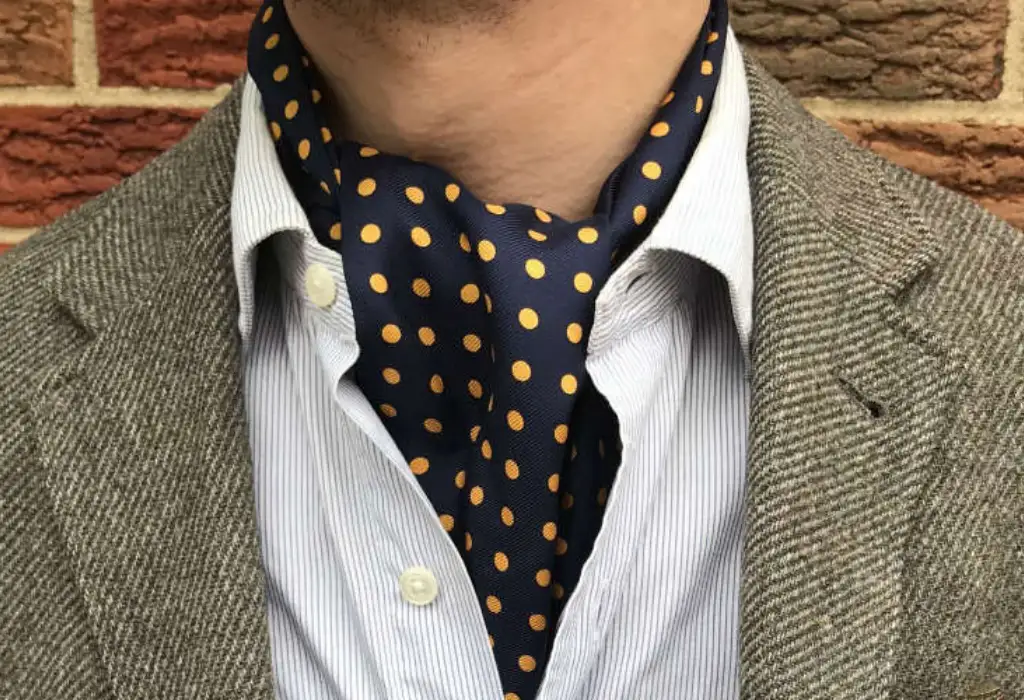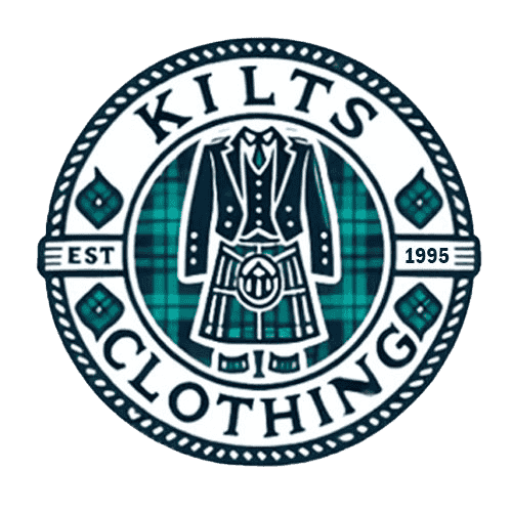- Mens Utility Kilt Collection
- Tartan Kilts Collection
- Best Hybrid Kilt Collection
- Leather Kilts
- Denim Kilts Womens
- Casual Kilt
- Formal Kilt
- Irish Kilt
- Kilt Vest
- Scottish Kilt
- Sport Kilts for Men – Durable & Comfortable
- Tactical Kilt – Durable Multicam Kilt for Men
- Wedding Kilt
- Firefighter Kilt
- Flag Kilts
- Military Kilt
What Is A Cravat? History & How To Tie

Cravats transcend their role as mere neckwear, embodying centuries of style and sophistication. Cravat neckwear originated as practical kilt accessories in the 17th century, evolving into symbols of aristocratic fashion by the 18th century.
Formal cravats adorned the necks of European noblemen with intricate folds, wrinkles, and luxurious fabrics. Today, cravats remain a versatile and timeless element of formal attire, prized for adding a touch of refinement to any outfit.Also known as cravat accessories, cravats are characterized by their wide fabric strips that encircle the neck and are secured with either a knot or a pin.
Unlike modern neckties, cravat ties stand out for their width and the intricate knotting techniques often required to achieve their distinctive look. This unique feature sets them apart as a fashion statement and underscores their historical significance and craftsmanship
History of Cravats
The history of cravats kilt accessories can be traced back to 17th-century Europe, where they originated as simple cloth strips worn by Croatian mercenaries serving in France.
These early cravats, known as "cravates" in French, were functional accessories that protected the neck and doubled as bandages. Cravat bandage usage highlights the practical beginnings of this now sophisticated neckwear.
By the 18th century, historical cravats had become a hallmark of European aristocratic fashion. Influenced by the court of King Louis XIV of France, cravat fashion evolved into elaborate neckwear adorned with lace, embroidery, and intricate pleats.
They signified wealth and status, often complementing the attire of noblemen in paintings and portraits of the era.During the 19th century, cravats underwent various transformations in response to changing fashion trends.
The Victorian era saw a resurgence of interest in historical styles, leading to the revival of elaborate cravats inspired by Renaissance and Baroque designs. In the early 20th century, cravat styles began to simplify, paving the way for the emergence of modern neckties.
How to Wear and Tie a Cravat
Choosing the Right Cravat
Select a cravat that complements your outfit and the occasion. Silk cravats are best suited for formal events, while patterned or textured varieties can add flair to everyday attire.
Folding and Preparation
Lay the cravat flat and arrange any wrinkles or folds neatly. Depending on the style, you may need to fold or pleat the cravat to achieve the desired look.
Tying the Knot
There are several ways to tie a cravat knot, each imparting a different formality and style. The most common knots include the Ascot knot, the Steinkirk knot, and the simple knot. Follow step-by-step instructions or video tutorials to master your preferred knotting technique.
Adjusting and Finishing
Once tied, adjust the cravat so it sits comfortably around your neck and complements your attire. Ensure the ends are neatly tucked or draped to maintain a polished appearance throughout the day or evening.
Types of Cravats
Traditional Silk Cravats
Silk cravats remain the epitome of elegance and formality. They are characterized by their smooth texture and luxurious sheen, making them ideal for formal occasions such as weddings, galas, and evening events. Silk cravats are often tied in various knots, each imparting a distinct flair to the wearer's ensemble.
Ascot Cravats
Ascot cravats derive their name from the prestigious horse racing event, the Royal Ascot. These cravats are typically wide and feature a simple knot or pin at the front. Ascot cravats are less formal than silk varieties but exude a refined, aristocratic charm suitable for daytime events and semi-formal gatherings.
Patterned and Textured Cravats
For those seeking to add a touch of personality to their attire, cravat patterns offer many options. From paisley and floral motifs to textured weaves such as jacquard and brocade, these cravat styles provide versatility in styling. They can complement both formal and smart-casual outfits.
Difference between Cravats and ascots
Cravats and ascots, though similar in some respects, differ primarily in their style, historical origins, and how they are worn. Cravat neckwear is wide, often pleated or folded fabric strips worn around the neck, and it originated in the 17th century.
Initially functional, they evolved into elaborate symbols of status in European aristocracy, requiring intricate tying techniques. Cravats are typically associated with formal attire.
Ascots, on the other hand, are narrower than cravats and made from silk or similar fabrics. They emerged in the late 19th century as a more casual alternative to cravats.
They were worn loosely around the neck and secured with a simple knot. Ascots gained popularity among English gentlemen for daytime activities and sported a relaxed yet refined aesthetic.
While both cravats and ascots contribute to a sophisticated look, cravats are wider, more formal, and have a longer historical lineage. In contrast, ascots are narrower and more casual and gained popularity in the Victorian era and beyond.
Conclusion
In conclusion, cravat kilt accessories endure as a captivating symbol of timeless elegance and historical charm in fashion. Whether chosen to honor tradition or express personal style, formal cravats are a versatile accessory that elevates the sophistication of any ensemble.
By delving into their rich history, exploring diverse cravat styles, and mastering the art of tying them, individuals can embrace the allure of cravats and create a memorable impression in formal and casual settings. As fashion evolves, the enduring appeal of cravats persists, offering a distinctive touch that transcends trends and celebrates the artistry of classic menswear.
FAQs
Men wear cravats to add a touch of elegance and sophistication to their attire, often enhancing their overall style for formal or special occasions.
Cravats are suitable for formal occasions like weddings and galas, but they can also add flair to smart-casual outfits.
Yes, cravats remain a timeless and versatile accessory that continues to be popular in modern fashion.
Yes, a cravat is considered stylish, offering a classic and sophisticated look that elevates both formal and smart-casual outfits.
The cravat symbolizes elegance, sophistication, and a rich historical connection to aristocratic fashion and refined menswear.
The cravat was invented in Croatia, where Croatian mercenaries first wore it in the 17th century before it became popular in France and across Europe.




